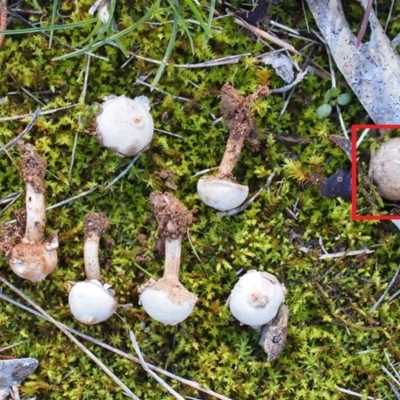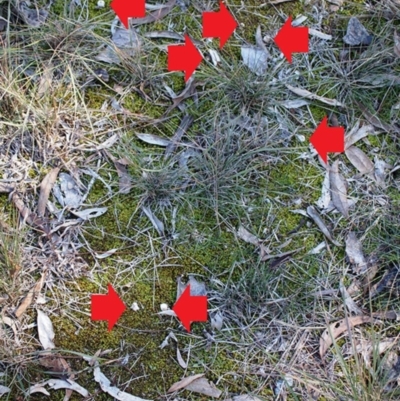Tulostoma pulchellum
The fruit body consists of a spore sac atop a short stem (with the latter usually buried in the ground). The sac contains powdery spores and a capillitium (a cotton-wool-like mas of hyphae). The sac is roughly hemispherical in shape with a socket in the flat base into which the stem fits. The sac may be up to 15 millimetres in diameter and the stem up to 30 x 5 millimetres. The sac’s skin (or endoperidium) is whitish to fawn and the sac has a small, apical mouth through which the spores escape. In this species the mouth is a well-defined zone, consisting of a central opening, surrounded by a small, radially fibrillose circular area. Early in its development the sac is enveloped in a second skin (the exoperidium). In this species the exoperidium is a well-developed white membrane and and soil grains are bound to its outer surface. With time the exoperidium breaks up and disappears except, usually, for a persistent basal portion.
The original description of this species (based on material collected in Australia) was published in a French mycological journal in 1889, by an Italian mycologist to whom the Australian collection had been sent.
Tulostoma pulchellum is listed in the following regions:
Canberra & Southern Tablelands
Species information
- Tulostoma pulchellum Scientific name
- Common name
- Not Sensitive
- Local native
- Non-invasive or negligible
- Machine learning






